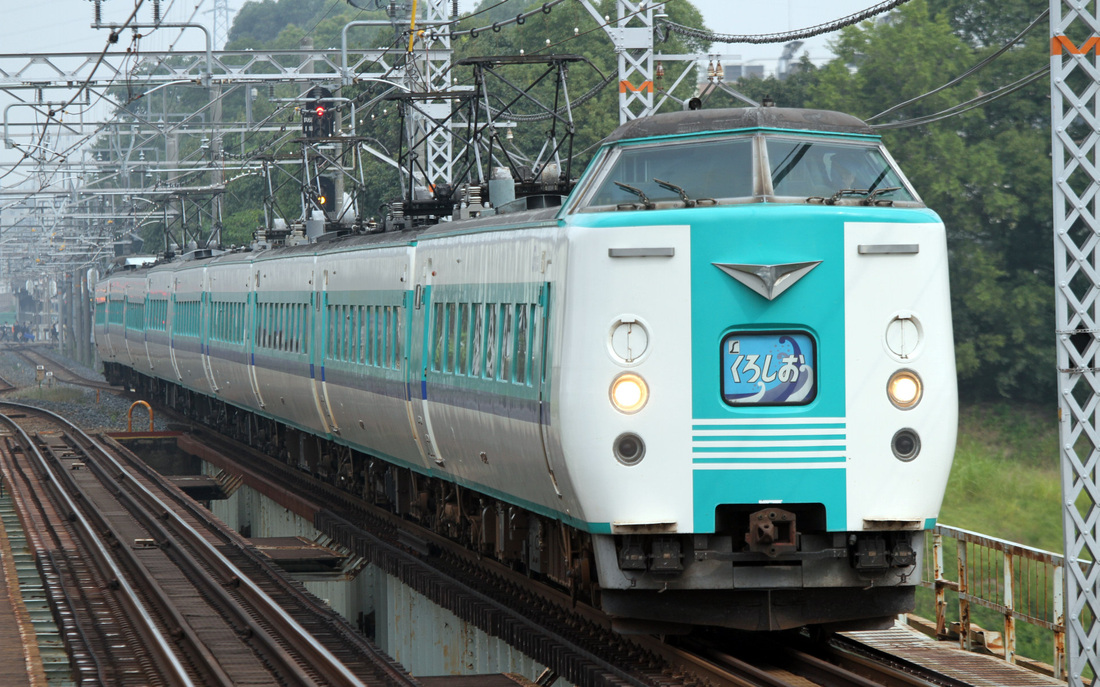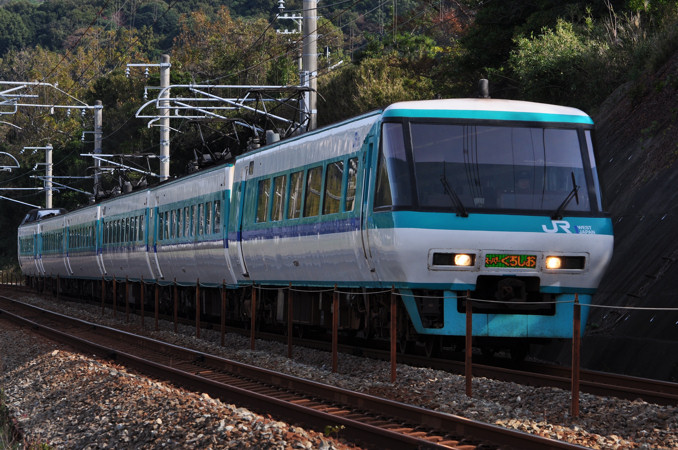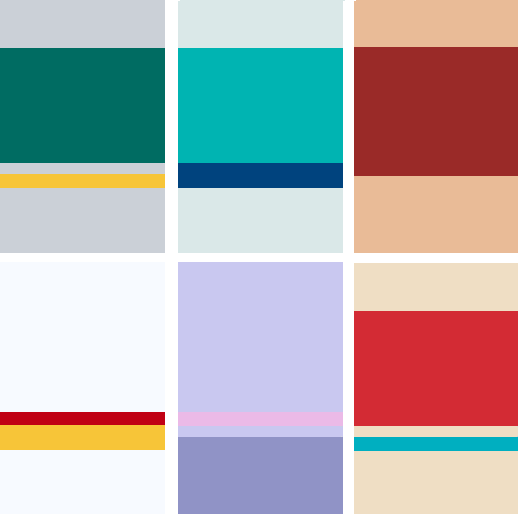JNR Series 381Mainly operated as the Limited Express Yakumo on the Sanyo Main Line through the Sanin Main Line and the Limited Express Kuroshio on the Tokaido Main Line through Kisei Main Line
In Service: 1973 - Present Top Speed: 120km/h (Service) 179.5km/h (Test) Length: 21300 mm (End cars) 21300 mm (Middle cars) Width: 2900mm Consist/Formation: 2 motorized cars + 1 trailer car (3 cars) 4 motorized cars + 2 trailer cars ( 6 cars) 6 motorized cars + 3 trailer cars (9 cars) Electric System: 1500v DC through overhead wires Number built: 277 cars Developed to combat the mountainous terrain of the Chuo Main Line, the Series 381 was the first production model train in Japan to have adopted a tilting system. This tilting system allowed the Series 381 to "tilt" towards the inside of the curve to counteract the forces of gravity trying to pull it towards the outside of the curve. This meant that the train could speed through curves that other trains would have to slow down for. While this seemed like a brilliant idea at the time, the tilting system caused motion sickness in many riders leading to some changes in the system. While improvements were made, the problem would not truly be solved until later computer controlled tilting systems were introduced. While the body design is generally similar to the Series 183, all air conditioning equipment was moved underneath the body, leaving only the pantographs on the roof. A few middle cars were given a driver's cab with a very large windshield that provided a view for passengers riding in that car. These cars are known as "Panorama cars". Did you know? The Series 381s were originally equipped with motion sickness bags in every seat due to its tilting system. |




